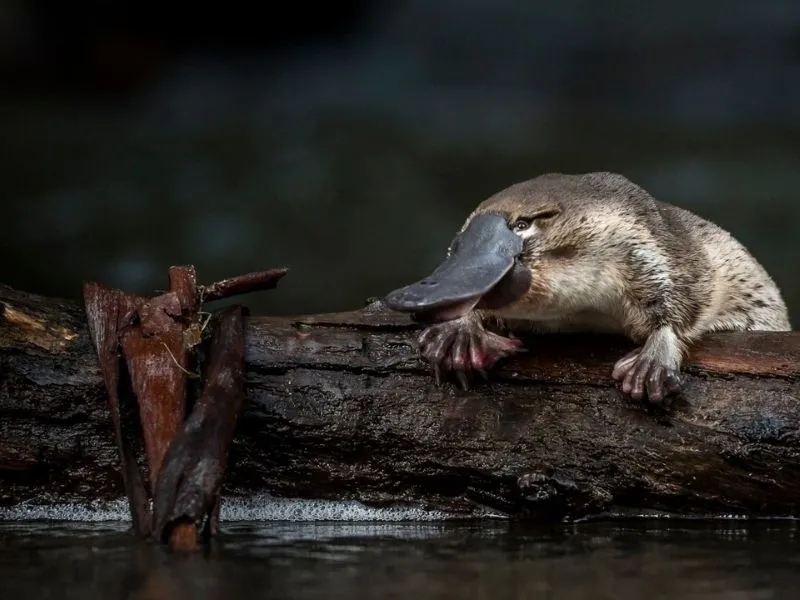
The Australian Conservation Foundation has been busy preparing its platy-project, a month-long study of the Platypus to learn more about where they live, and how many live in the wild, so they can prevent a further decline in their numbers.
By Harry Mulholland
Throughout the month of September, the Australian Conservation Foundation (ACF) is asking everyone around the country to join the platy-project by spotting platypuses in the wild to help the University of New South Wales (UNSW) build their database of platypus habitats.
The platy-project map was created by UNSW researchers to find which specific waterways around the nation the platypuses live in, and to see if population or local extinctions have occurred in regions with recorded platypus activity.
In a video posted on YouTube, Australian Conservation Foundation Community Organiser, Amy Northwood, said there were some key ingredients to holding a platypus survey including finding a suitable location, what to pack for your survey and how to record your results.
“To begin I looked at the platy-project map to find a location where platypuses have been spotted before, but not for a while.
“I checked the site was on crown land with good parking and accessibility… don’t visit places on private property unless you know the owner and have their permission.
“A few handy things you can pack to make the experience as comfortable as possible include a phone, a notepad and some binoculars,” Northwood said.
On the platy-project map, previous platypus sightings are colour coded with red and orange representing no sightings have been recorded since 2000 or earlier, and the ACF are highlighting these areas of importance to see if there are still platypuses in these regions.
Yellow markers represent a platypus has been sighted in the area between 2001 and 2010, green markers represent a platypus has been found in these areas since 2011, and grey markers represent areas within the platypus’ distribution where no recordings have been made.
On the platy-project website, the ACF recommends participants conduct their survey in the hour after dawn or the hour just before dusk as platypuses are most active at night.
They also say platypuses are most active in winter and early spring as the colder weather means they need more food and will spend more time looking for it.
The ACF also recommends visiting healthy waterways with bushes along the banks, flowing water, and places for platypuses to duck and dive as they search for food.
The ACF are encouraging participants record any sightings on the platy-project database on their website, they are also encouraging participants to try and take photographs and to make notes on the movements of the platypus such as watching for ripples in the water, what shape are they and what the vegetation was like along the waterway.
They are encouraging participants to also log their results if they are unsuccessful with spotting a platypus, as it is still helpful information in their research.
Platypuses are a small amphibious mammal most famously recognised for their flat bill commonly found in freshwater waterways across eastern Australia, and like the echidna, it is a monotreme which is a mammal that lays eggs.
They live in freshwater systems from the tropical rainforests in Far North Queensland all the way down to Tasmania and as east as the Australian Alps.
According to the Australian Platypus Conservancy, platypuses are listed as Near Threatened in Australia and internationally, stating overall population numbers are declining with estimates predicting the population has declined by up to 30 per cent over the last 21 years.
Severe reductions and local extinctions have also been documented in recent decades in the Avoca River basin in western Victoria with no sightings occurring there since 2003.
Similarly in the Wimmera River basin also in Western Victoria the population had declined from 1,500 platypuses at the time of European settlement to less than 200 in the 1990s.
In 2016 the total population of Platypuses was estimated to be anywhere from 30,000 to 300,000 with the large variance due to logistically demanding studies to find population sizes, a large range of habitats and the unknown extent of how droughts affect the population.
Speaking to Sustainability Times in March 2020, Researcher at the UNSW Centre for Ecosystem Science, Gilad Bino, said there was an urgent need for a national risk assessment for the platypus to assess their conservation status, evaluate risks and impacts, and prioritise management in order to minimise any risk of extinction.
“Under current climate and threats, platypus abundance and metapopulation occupancy were predicted to respectively decline by 47 to 66 per cent and 22 to 32 per cent over 50 years.
“This would cause extinction of local populations across about 40 per cent of the range.
“These dangers further expose the platypus to even worse local extinctions with no capacity to repopulate areas,” Bino said.
The largest impacts affecting platypuses include extensive land clearing, the damming of rivers and other man-made factors.
Dams can severely restrict the movement of the platypus, land clearing can destroy their burrow and fishing gear and traps left in rivers can cause them to drown according to Bino’s research.
University of Melbourne Professor, Brendan Wintle, said “Even for a presumed safe species such as the platypus, mitigating or even stopping threats such as new dams, is likely more effective than waiting for the risk of extinction to increase and possible failure.
“We should learn from the peril facing the koala to understand what happens when we ignore the warning signs,” Wintle said.
Biologist for EnviroDNA, Josh Griffiths, said no one has really considered platypuses under threat until recently.
“Very little research has been done on population status in the past.
“And because historical data on platypuses is very poor it’s difficult to identify and quantify their decline.
“Yet many populations are likely to have been declining for more than 50 years due to land clearing, urbanisation, changes to river flows and more.
“And long-term monitoring programs have identified widespread declines in the greater Melbourne area and western Victoria,” Griffiths said.
Griffiths also explained before the Black Summer fires in 2019 and 2020, researchers knew platypuses were in trouble along many parts of the east coast but felt comforted they had safe havens in remote bush settings such as East Gippsland and the New South Wales South Coast, but the fires changed this.
“These areas were previously a stronghold for platypuses. The areas burnt were some of the best habitat and populations were considered relatively healthy.
“Dams, urban pollution, land clearing for agriculture, housing developments and closed fishing nets also pose a serious threat to these beautiful animals.
WHAT YOU CAN DO
Australians looking to help conserve the platypus population can sign up for the ACF’s platy-project and try to spot a platypus in September.
Registrations can be found on the ACF’s website as well as helpful information on where to look for platypuses, what tools participants will need and how to log data.
The ACF is also encouraging Australians to sign their petition asking the Federal Government to support ambitious global goals for nature to halt and reserve biodiversity loss and achieve a nature positive world by 2030.


